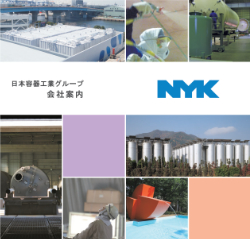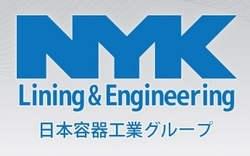Features of full-welded steel water tank and its earthquake resistance
1. Introduction
Steel water tanks have a long history with changing structures, construction methods and corrosion prevention measures depending on the historical background and technological innovations.
For example, painting with red lead paint and zinc hot-dip galvanizings had been used to prevent corrosion originally, and was replaced with metallic spraying in the late 1920s. Then, epoxy coating began to be used around 1959 and continued to be used along with improvement of coating materials. With regard to structures and construction methods, riveting and gas welding was used at first and then replaced with covered arc welding since around 1946. From around 1965, welding or bolting of mold panels became common construction methods1). Then, full-welded steel water tanks were launched on the market around 1977 and became the mainstream in the current market of steel water tanks.
Table 1 shows a brief history of steel water tanks. In the following sections of this paper, the outline and general features of NYK full-welded steel water tanks are described, focusing on their earthquake resistance.
2. Structure of full-welded steel water tanks
A full-welded steel water tank consists of a steel can body, and an epoxy lining film covering it. The outline and general features are as follows (see Figure 1, 2):
2.1 High-strength can body
・A can body consists of a corrugated top panel, corrugated sidewalls and an arc bottom panel each of which is attached by butt welding and fillet welding on both sides. Welding from a can body to a pipe connecting port forms an integrated structure.
・Not internally-reinforced in general sizes.
・No platform at the bottom which is provided for water tanks made of other materials. A skirt under a bottom panel is regarded as a platform. An integrated structure up to the base which is fixed with the foundation with anchors increases the reliability of earthquake resistance.
Table 1
| Year | Historical background and brief history of steel water tanks |
|---|---|
|
1940 |
Arc welding was introduced as a construction method (1946). The Water Supply Act was issued (1957). □Epoxy coating was introduced as a corrosion prevention method (1959). □Panel water tanks constructed by bolting and on-site welding were launched on the market (1965). The Building Standards Act was revised (1975). The Public Notice of the Ministry of Construction No.1957 came into force (1976). ■Full-welded steel water tanks were launched on the market (1977). The Enforcement Order of the Building Standards Act was revised (1980). The New Anti-Seismic Design Act came into force (1981). ■Custom-designedwater tanks were launched on the market (1989). Large steel water tanks were launched on the market (1993). GreatHanshin-Awaji Earthquake occurred (1995). ■Water tanks with emergency shutoff valves were launched on the market (1997). Water tanks accommodating water supply trucks were launched on the market(1998). The Mid NiigataPrefectureEarthquake occurred (2004). ■Full-welded steelunitwater tanks were launched on the market (2006). The Noto Hanto Earthquake occurred (2007). The NiigatakenChuetsu-Oki Earthquake occurred (2007). |
2.2 Long-life lining film
・Grit blasting for surface preparation enhances the adhesion between the lining film and steel panels.
・An epoxy lining film is applied on the outer and inner surface of tanks with a non-solvent hot airless spray. After application, it is heated at 120℃ for 4 hours, and hardens to form a solid lining film with a smooth surface.
Epoxy can be hardened at ordinary temperature or by baking. In general, hardening by baking superior properties and water resistance.
・The standard film thickness inside of tanks is set to 0.4 mm or more.
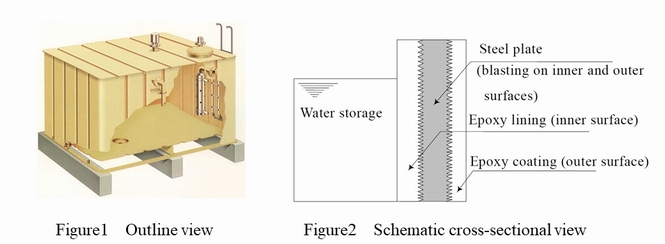
3. Custom-designed water tanks
As a main feature, full-welded steel water tanks can be designed freely, and it is possible to produce water tanks like monuments (custom-designed water tanks).
The function and performance of custom-designed water tanks is the same as that of rectangular tanks. In such tanks, pipes are contained inside and cannot be seen outside. This construction method aims to prevent compromising the design of the tank while serving as a tamper-resistant function. Moreover, it does not need concrete walls and fences which are normally required around tanks, thus providing an advantage in terms of cost.
Furthermore, it is also possible to produce free-formed water tanks depending on the shape of the site, and water tanks with wall paintings on the outer surfaces.
The following pictures are examples of custom-designed water tanks and free-formed water tanks (see Picture 1-5):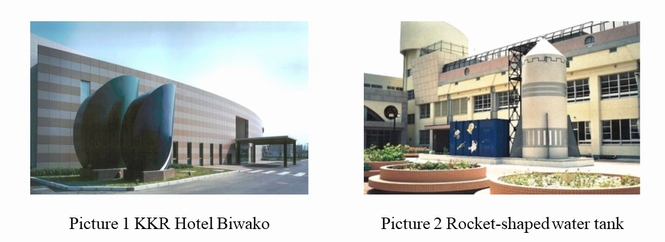
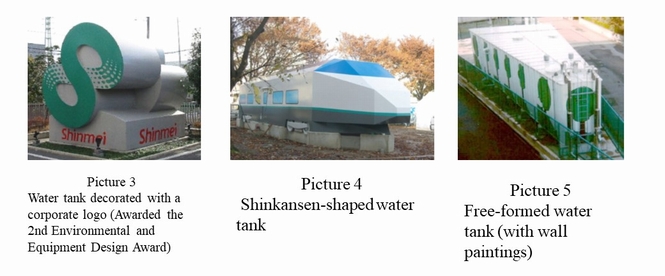
4. Disaster control
The purpose of a water supply tank is to “provide drinking water” to buildings. It is critical to maintain this function even when essential utilities are damaged in the event of earthquakes or other disasters.
4.1 Water tanks with excellent earthquake resistance
As mentioned above, the robust structure of full-welded steel water tanks provides excellent earthquake resistance. If water does not leak from a water reservoir at an evacuation site, holding 10 tons of water, about 1,000 people are provided with drinking water for 3 days2). In fact, NYK full-welded steel water tanks had no problems such as damage and water leakage during Great Hanshin-Awaji Earthquake, The Mid Niigata Prefecture Earthquake, the Noto Hanto Earthquake and the Niigata ken Chuetsu-oki Earthquake, and fulfilled the purpose of water tanks in an emergency. The detailed situation in an actual earthquake is described in the next chapter.
4.2 Emergency shutoff valves
The system of emergency shutoff valves is to close valves when a preset acceleration is detected to keep water inside a tank. Water runoff caused by piping damage can be prevented by installing this system on water tanks.
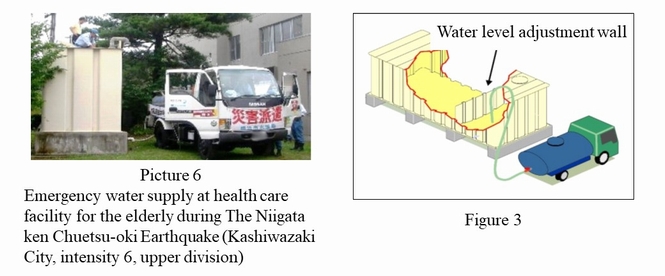
4.3 “Water reservoir accommodating water trucks” enhance water supply efficiency
Water tanks are provided with water from water trucks (mainly with a capacity of 2 to 4 tons) for an emergency water supply (see Picture 6). However, it is difficult to take water to large capacity water tanks because the water level hardly rises.
To address this problem, “water reservoirs accommodating water trucks” are available in which walls (water level adjustment walls) are installed inside so that the water level can rise even with the water volume from water trucks (see Figure 3).
They are normally used as water reservoirs, thus offering advantages in terms of storage space and maintenance cost compared with simple water tanks for emergency water supply. In addition, water hose connecting ports and emergency water intake openings can be provided at any locations on the reservoir. This enables reservoirs to take water from water trucks and utilize it more effectively.
Recently, such “water reservoirs accommodating water trucks” are increasingly being introduced together with the emergency shutoff valves mentioned above.
5. In the event of an earthquake
This chapter describes an example of the result of post-earthquake investigations which NYK conducted. No problems due to damage or water leakage were found in any NYK units.
Figures 4 through 7 are based on the “Distribution of seismic intensity 7 from field investigation” and the “Estimated seismic intensity map” by the Japan Meteorological Agency.
Types of buildings and names of places in the captions of pictures are those at the time of the earthquakes.
5.1 Great Hanshin-Awaji Earthquake (The South Hyogo Prefecture Earthquake)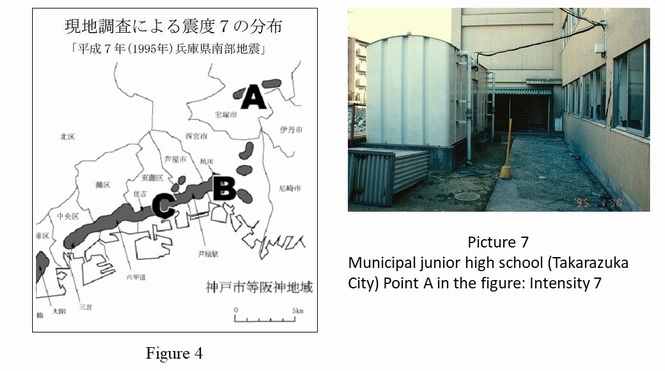
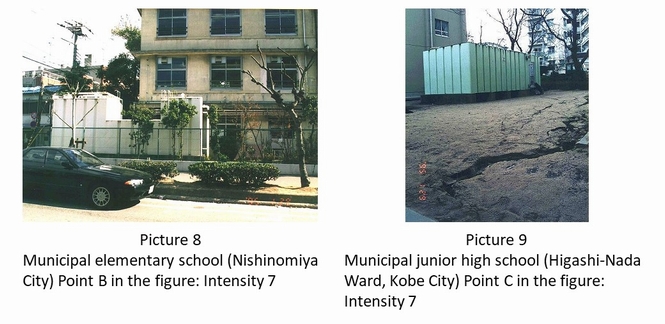
5.2 The Mid Niigata Prefecture Earthquake in 2004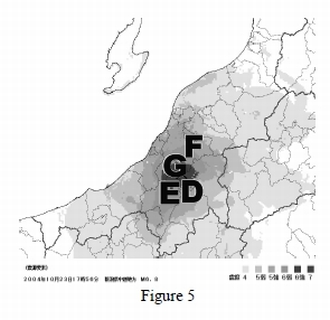
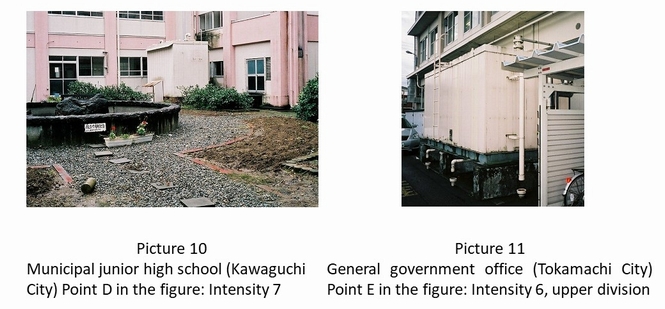
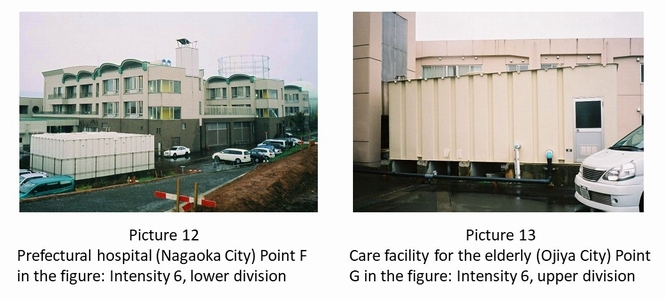
5.3 The Noto Hanto Earthquake in 2007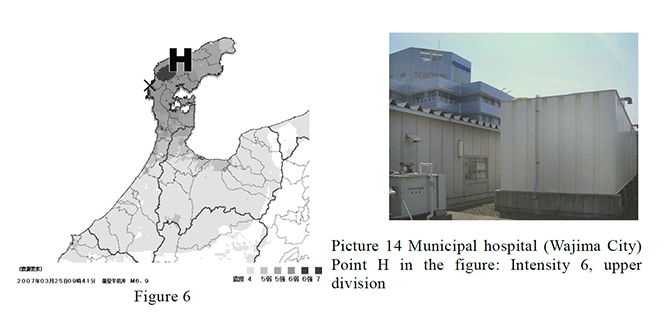
5.4 The Niigataken Chuetsu-oki Earthquake in 2007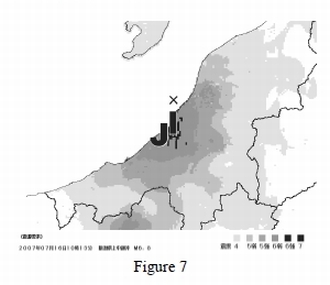
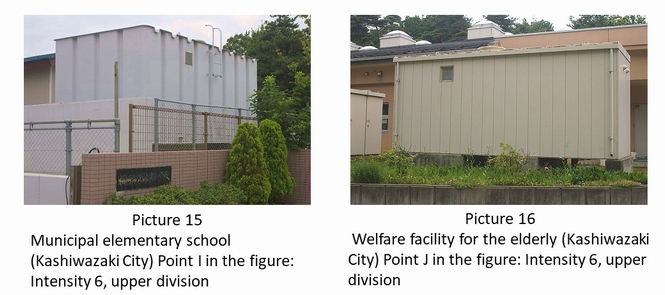
6. Environmental protection
Environmental protection efforts are promoted in full-welded steel water tanks in the following ways:
6.1 Long-life
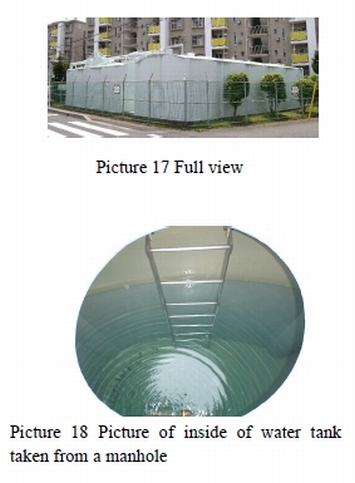
The combination of a robust can body with a full-welded steel structure and non-solvent lining material permits the construction of long-life water tanks. Moreover, the non-solvent material provides an excellent working environment without affecting workers and dispersing odor to the surroundings.
A water reservoir which was delivered at the beginning of the launch of the sale has still been used for over 30 years (see Picture 17 and 18). An over 60 years product life cycle is expected for film in the accelerating test, which is the same lifetime as that of buildings.
The prolonged product life cycle means reduction of industrial waste and saving of resources and energy.
6.2 Re-use
Full-welded steel water tanks have a structure (steel panels) covered by a lining material, so that fatal damage to water tanks hardly occurs. Therefore, they can be re-used by retrieving and re-applying the lining material.
The general procedure for re-use is as follows:
(1)Recovering and taking back the water tank to the NYK plant.
(2)Conducting a visual inspection. Remodeling a tank by adding or removing nozzles and other components, as necessary.
(3)Performing blasting to remove the existing lining film.
(4)Applying the lining.
(5)Painting the outer surface depending on the installation environment.
(6)Delivering and installing the tank.
In this way, as the same epoxy lining material can be applied by the same process as that used in the production of a new tank, the same quality is achieved for the lining of a re-applied tank which can be re-used for a long time.
The re-use of water tanks eliminates the need to produce a new can body, thus saving resources and energy.
6.3 Recycling
It is easy to recycle NYK full-welded steel water tanks because SS400 steel, a common material for structures, is used. No special facilities are needed for recycling. Tanks are recycled in a general method by disassembling, melting in a furnace and re-forming as steel products.
7. Conclusion
Despite of their excellent earthquake resistance and durability, the market share of full-welded steel water tanks is still small in the building equipment industry. NYK will continue to make efforts for further enhancement of functions and improvement of technologies. Our mission is to produce and sell more excellent full-welded steel water tanks, and we believe that this will contribute to the well-being of the society and the global environment.
References
1)“Technical History of Air-Conditioning and Sanitary Equipment”, the Society of Heating, Air-Conditioning and Sanitary Engineers of Japan
2)“Tokyo Local Disaster Prevention Plan (Earthquake Version), Section 3”, the Tokyo Metropolitan Disaster Management Council
技術情報 トップページへ
関連ページ
- ポジティブリスト制度(PL制度)への適合について
- 弊社製品の食品衛生法および器具・容器包装のポジティブリスト制度(PL制度)への適合についてご報告いたします。
- 地震調査報告
- 地震時の鋼板製一体型水槽の状況を確認しました。 これまでの大地震で鋼板製一体型水槽が破損した事例はありません。
- バルジング振動実験
- 中央大学平野廣和教授とその研究グループが、愛知工業大学耐震実験センターの大型振動台を用いて行った振動実験の結果をご紹介いたします。
- 津波での事例
- 津波でも流されることのなかった鋼板製一体型水槽の事例をご紹介いたします。 水槽の高さを超える津波を受け、外装材は剥がされていましたが、鋼板製の水槽本体は無事。内面のライニング皮膜も健全でした。
- 鋼板製一体型水槽のリサイクル
- 製品の回収、再生により長寿命循環システムを構築しています。
- エポキシ樹脂ライニングとは
- エポキシ樹脂とは分子内に2つ以上のエポキシ基を持っている化合物のことです。
- 受水槽とは
- 受水槽とは、ビル・マンション・学校・病院などや一時に多量の水を使用する建物などで、水道局から水道管を通って送られてきた水をいったん貯めておく容器のことです。
- LINK
